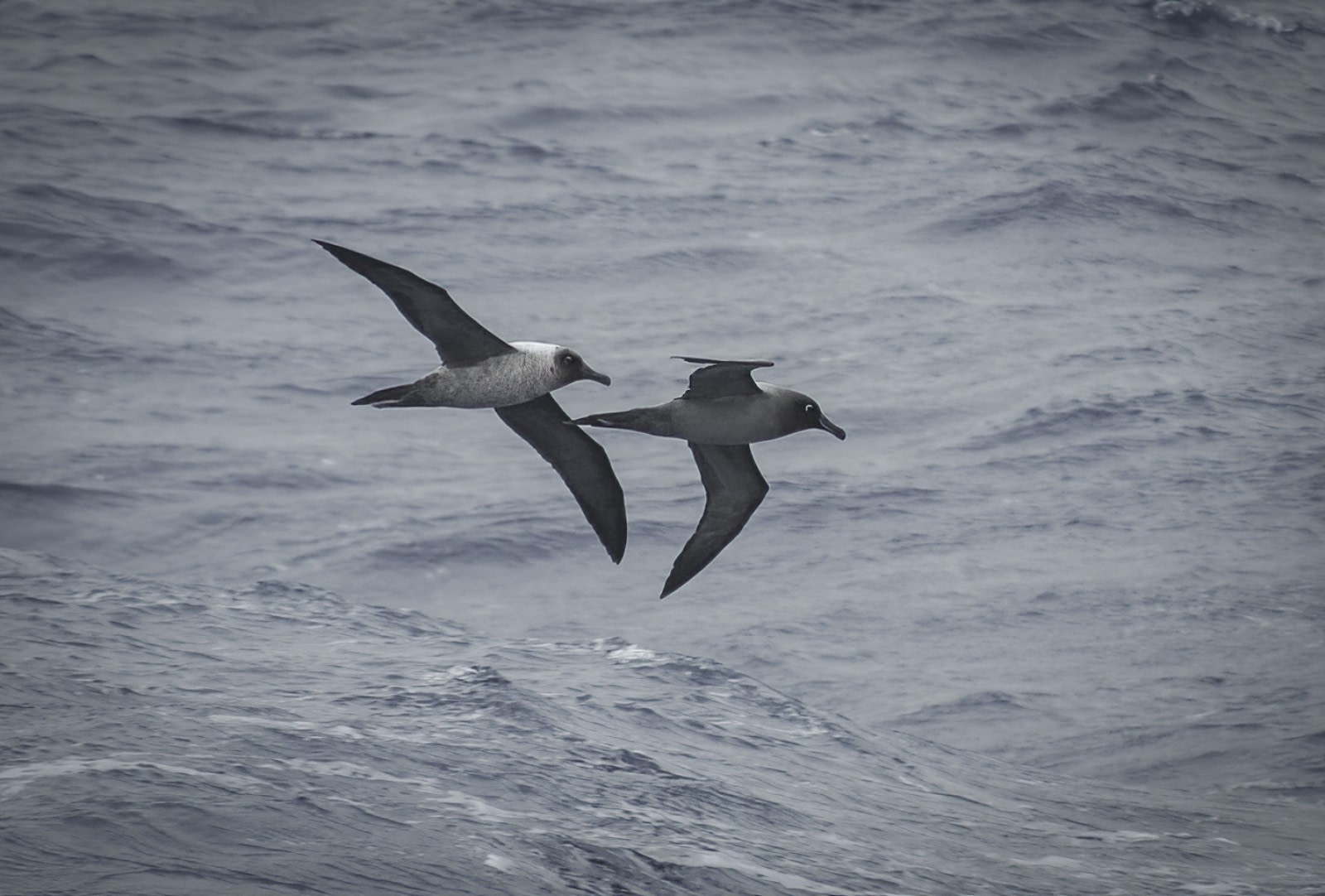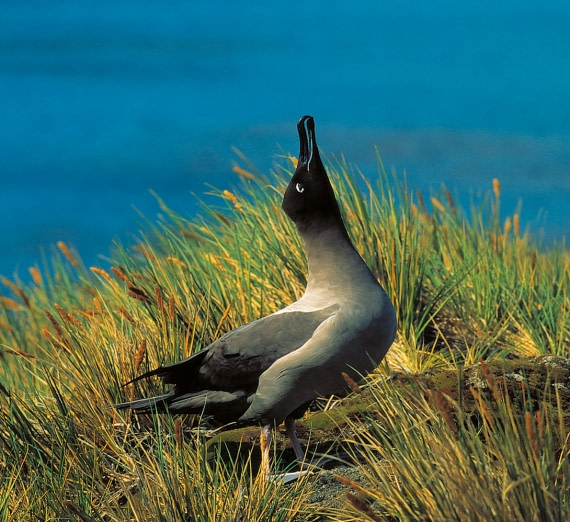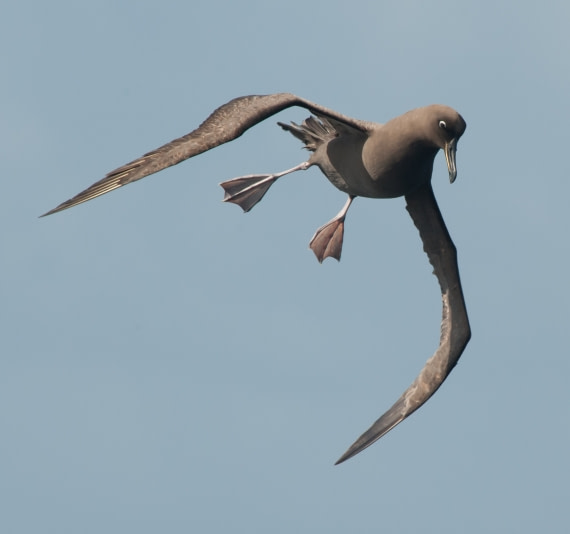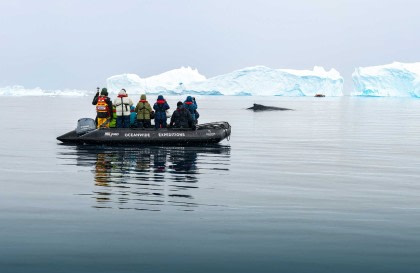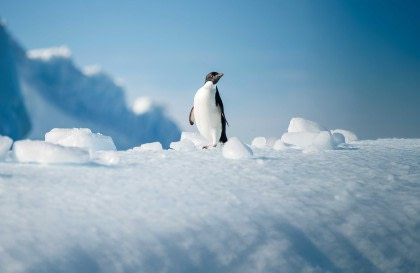Name: Light-mantled Albatross, Grey-mantled Albatross, Light-mantled Sooty Albatross (Phoebetria palpebrata)
Length: 80 to 90 cm.
Weight: 2.5 to 3.5 kg.
Location: Circumpolar around the Southern Ocean. Pelagic except when breeding.
Conservation status: Near Threatened.
Diet: Squid, krill, crustaceans, fish, carrion.
Appearance: Ash coloured with darker area around the head and lighter areas across the back and wingtips. Black bill. Distinctive white stripe immediately above the eye.

How do Light-mantled Albatrosses feed?
Light-mantled Albatrosses are generally surface-fishers, diving only about 5 metres on average. They will sometimes follow dolphins and whales and use the mammals’ herding of fish to their own benefit.
They will also follow fishing trawlers to steal fish and pick up the ship’s offal and refuse, although they tend to do this less than other forms of Albatross.
Are Light-mantled Albatrosses social?
Light-mantled Albatrosses tend to be solitary while at sea, and only form loosely-associated breeding colonies, if at all, during the mating season.
How fast do Light-mantled Albatrosses fly?
By using a combination of wind currents and gravity (referred to as “dynamic soaring”) Light-mantled Albatrosses can fly 110 metres with a drop of only 5 metres as the cost. They can fly at speeds of over 110 km per hour.
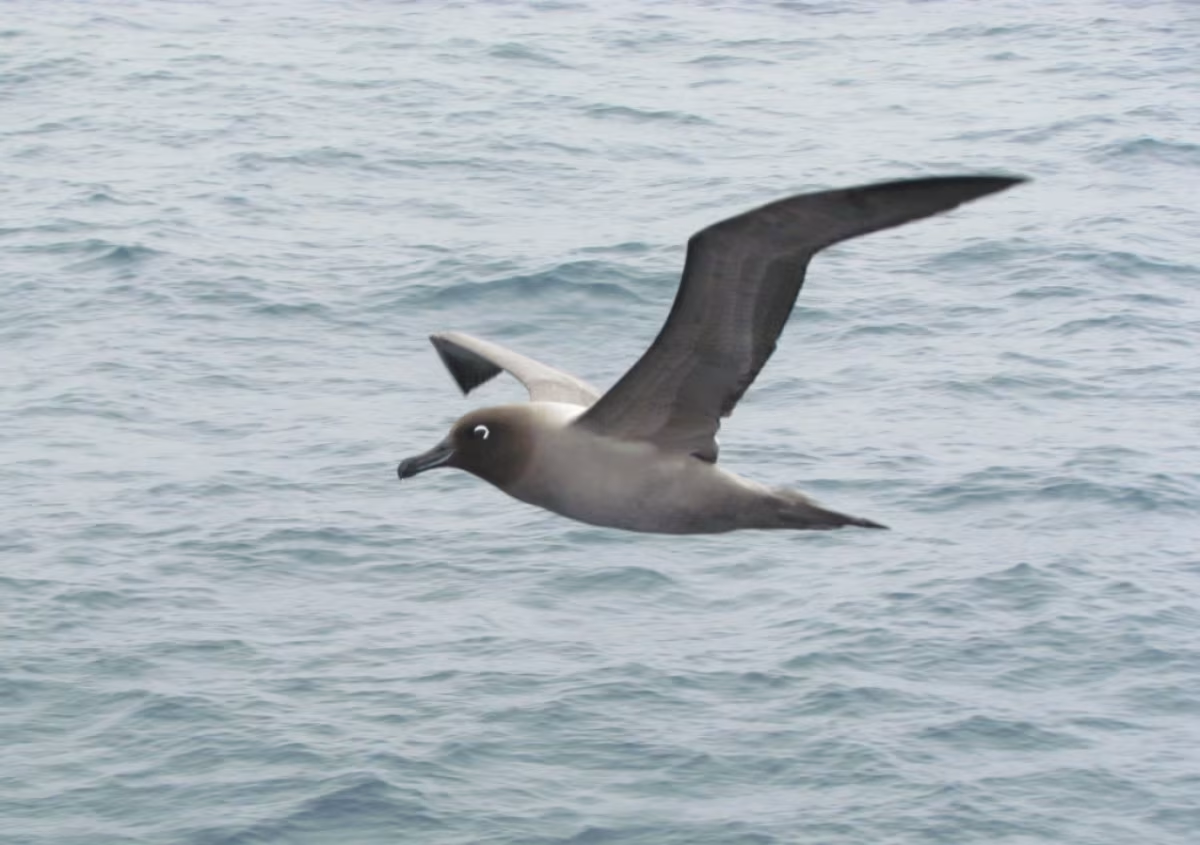
What are Light-mantled Albatross birthing rituals like?
Light-mantled Albatrosses mature sexually starting at 8 years old. They will continue to mate until they are around 30 years old, mating every second year.
They only form very loose colonies when mating, or may in fact make their nest in a solitary position away from others of its species.
Monogamous, the parents will return and renew their courtship with each other for decades.
Nests are built on cliff faces or ledges that are sheltered from harsh westerly winds. The nests are constructed of mud with a hollowed centre that is lined with grasses and plants.
The single egg is laid in October through November. The parents take turns incubating the egg for a period of up to 70 days.
The egg hatches around the end of the year, taking about 4 days for the young to actually break completely free of the shell. The parents then take turns feeding the chick via regurgitation for another 20 days, at which point the chick is ready to fledge (take its first flight).
How long do Light-mantled Albatrosses live?
Light-mantled Albatrosses can live for longer than 40 years in the wild.
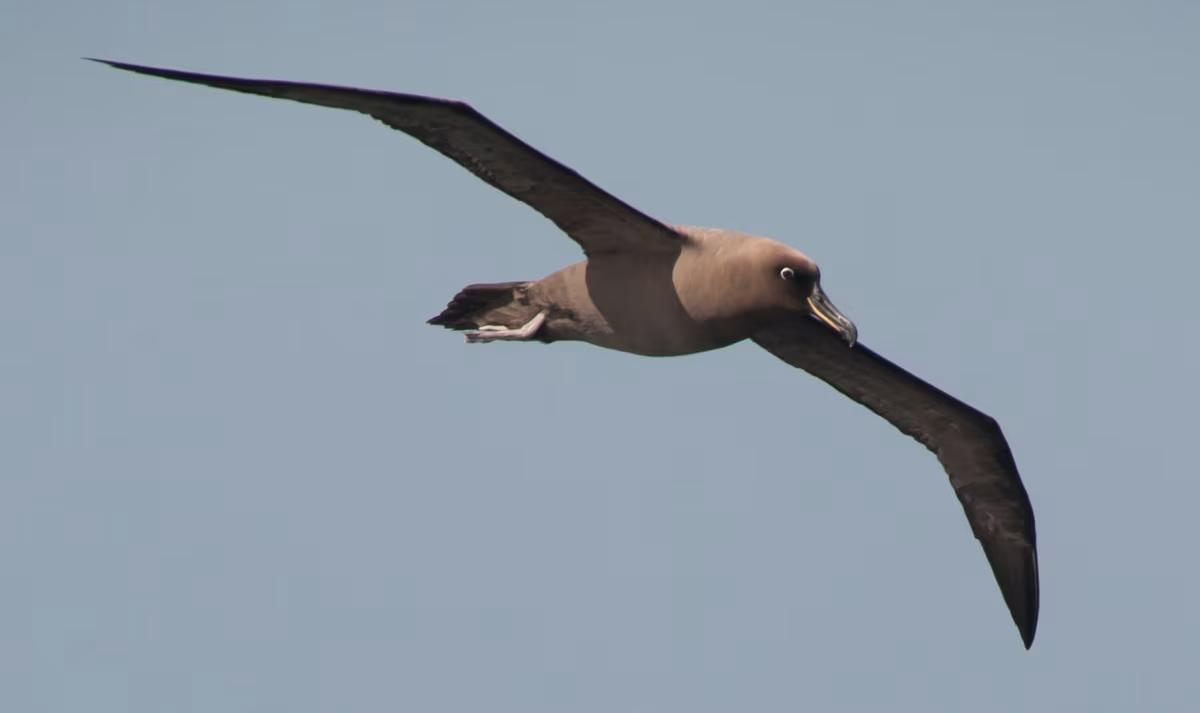
How many Light-Mantled Albatrosses are there today?
There are about 87,000 Light-mantled Albatrosses in the world today.
Do Light-mantled Albatrosses have any natural predators?
Light-mantled Albatross young and eggs are prey to rats, feral cats, and Giant Petrels.
7 Awesome Light-mantled Albatross Facts
1. Like some other sea birds Light-mantled Albatrosses have a gland above their nasal passages that produces a saline solution to help expel excess salt taken in from sea water while feeding.
2. Light-mantled Albatrosses are one of the species of birds that produce foul-smelling oil in their stomachs that can be used to feed their young, feed themselves during long flights, or can be sprayed out of their mouths to deter predators.
3. Light-mantled Albatrosses are masters of gliding, able to travel thousands of kilometres on wind currents without flapping their wings.
4. The Light-mantled Albatross’ method of soaring is so energy-efficient that it actually uses up less energy than when they’re sitting in a nest.
5. The soaring however is at the mercy of the winds. If winds drop below speeds of about 18 km per hour the Light-mantled Albatross will not have enough lift to stay afloat. If winds get too heavy they will be blown off-course. If they have to flap much their big wings meet too much air resistance and they tire out at a rapid pace.
6. A Light-mantled Albatross’ take-off is an ungainly affair. They must find a spot where they can face into a fast-enough wind (usually about at least 20 km per hour) to take off without excessive flapping. If they have to flap to take off they have to skim across the surface of the water for a long distance (sometimes more than a kilometre) before they can attain enough speed to lift off.
7. They can also be rather ungraceful when they touch down on land. They use their webbed feet and tails as air brakes but if they’re still going too fast when they touch down they may topple over into a face-plant on the ground.
